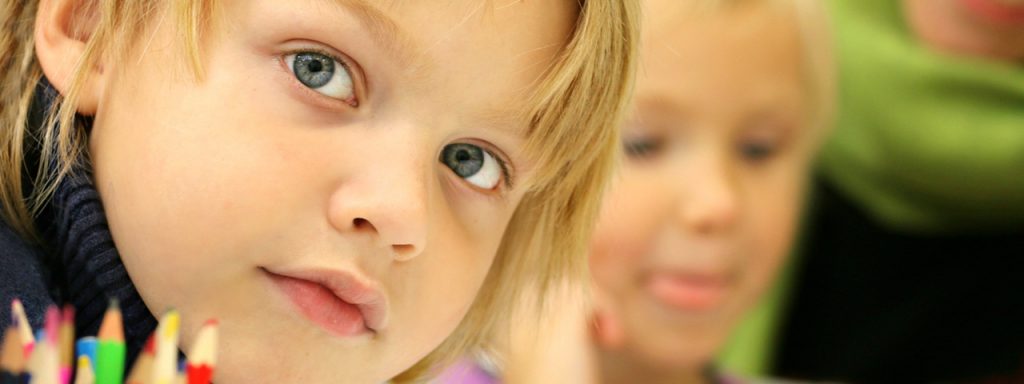Pediatric Eye Exams–Why They’re Important
Your child discovers the world with their eyes. We are happy to see that our babies recognize us, track objects around the room and play “I spy” walking or driving our young children home from school.
Because your child’s vision is crucial for learning, playing and connecting, having their eyes tested from infancy is important. A pediatric eye exam tracks development skills and detects problems early so your eye doctor can treat them.

How Often Do Kids Need Eye Exams?
According to the American Optometric Association (AOA) children should have an eye exam at 6 months, 3 years, at the start of school, and, after that, at least every 2 years. Eye Exams should be more frequent if the child has:
- developmental delay
- premature birth
- crossed or lazy eyes
- family history of eye conditions
- previous eye injuries
- glasses or contact lenses (eye exams should be annually)
When Should a Baby Have an Eye Exam
Your baby’s first eye exam should be at 6 months. The eye doctor will check that your infant is meeting visual milestones, such as:
- moving eyes properly
- eye tracking
- focusing on object
- eye teaming–how well the eyes work together
- Hand-eye coordination
Your eye doctor may also screen for eye conditions such as:
- stabismus–or eye crossing and misalignment
- farsightedness (hyperopia)
- nearsightedness (myopia)
- astigmatism
What Kind of Eye Tests Do Preschool Children (Ages 2 to 5) Need?
Preschool children observe their surroundings constantly and are hungry for information. Your child develops fine motor skills when they use crayons or build with blocks. Children at this age are active and may like to play tag or throw bean bags. All of these activities require good vision.
Vision problems in preschool children are not always obvious. Your child may avoid playing with puzzles or coloring and they may not tell you why. They could sit too close to the television, squint regularly or rub their eyes.
An eye exam will tell you if your child has vision difficulties and can screen for conditions such as crossed eyes (stabismus) or lazy eye (amblyopia). The earlier these conditions are treated, greater the chance of a successful outcome.
What Do Eye Exams for School-Age Children (6-18) Involve?
Declining grades and an unwillingness to participate in some sports could be signs of vision problems. Others include:
- Short attention span
- Headaches
- Frequent blinking
- Avoiding reading
- Tilting the head to one side
- Losing their place often while reading
- Double vision
- Poor reading comprehension
For school-age children, an eye exam goes beyond testing basic visual acuity and will also test:
- Binocular vision: how the eyes work together as a team
- Focusing
- Peripheral Vision
- Color Vision
- Hand-eye Coordination
- Tracking
The doctor will also examine the area around the eye and inside the eye to check for any eye diseases or health conditions. As a parent, you can be pro-active and tell the eye doctor about any developmental delays, history of eye problems or injuries or medications your child is taking.
What Treatments Can Improve Your Child’s Vision?
Regular eye exams help diagnose eye and vision problems and give you a chance to discuss treatment options with your eye doctor. Our eyecare professionals tailor-make our treatments according to your child’s age and type of condition. some of our popular treatments include:
- eyeglasses
- contact lenses
- eye patch
- orthokeratology
- vision therapy
Let us help your child get a head start on good vision so they can discover the world in a whole new light. Schedule an appointment with Dr. Jorge Benavente at Benavente Eyecare in Munster today!
